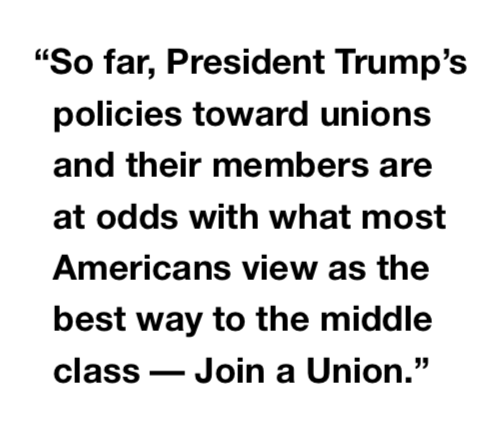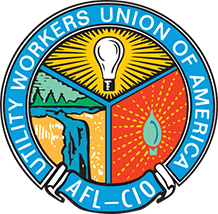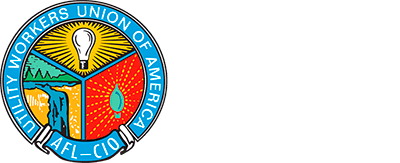In November 2016, Donald J. Trump was elected as the 45th President of the United States. In his campaign, Trump claimed that he was on the side of America’s workers. Sadly, halfway through Trump’s first term, the President has repeatedly and relentlessly attacked American workers and their Unions.
Decisions of right-wing judges will last for decades
The most blatant example of President Trump’s war on workers is the lifetime appointments of Neil Gorsuch and Brett Kavanaugh to the United States Supreme Court. Both Gorsuch and Kavanaugh have a long history of anti-union decisions. Justice Gorsuch was part of the majority decision in Janus v. AFSCME Council 31, which ruled against public employee unions and their membership. The Janus decision, which reversed over 40 years of well-settled precedent, turned the entire country right-to-work for public employee unions. The Janus decision has negatively affected thousands of UWUA members.
As of January 2019, the President appointed 83 judges to the federal courts of appeal and district courts. There are also about 52 nominations awaiting confirmation. Almost uniformly, these lifetime judges are anti-union and anti-worker. The impact of these right-wing judges will be felt for decades.
 The National Labor Relations Board, the agency charged with protecting workers’ rights, has three anti-union Board members appointed by the President. These right-wing members have spent their careers working for union-busting law firms. NLRB General Counsel Peter Robb is thought to be the most anti-union General Counsel in the history of the NLRB. General Counsel Robb has set an agenda at the NLRB which is aimed at undermining and restricting workers’ rights. The NLRB is meant to act as an agency to support workers’ rights to organize and to encourage collective bargaining, but its mission under the Trump Board is to do the exact opposite.
The National Labor Relations Board, the agency charged with protecting workers’ rights, has three anti-union Board members appointed by the President. These right-wing members have spent their careers working for union-busting law firms. NLRB General Counsel Peter Robb is thought to be the most anti-union General Counsel in the history of the NLRB. General Counsel Robb has set an agenda at the NLRB which is aimed at undermining and restricting workers’ rights. The NLRB is meant to act as an agency to support workers’ rights to organize and to encourage collective bargaining, but its mission under the Trump Board is to do the exact opposite.
The anti-union Trump-appointed NLRB has already issued a number of decisions which hurt workers and their unions. Most recently, the Board issued a decision that misclassified a group of employees as independent contractors. The employees, in this case, sought to organize a union, but the Board’s decision effectively stopped the organizing drive because independent contractors are not allowed to unionize. More employers are misclassifying employees as contractors to avoid unionization and other worker protection laws like overtime pay and minimum wage.
The President is also the CEO of one of the largest workforces in the world. President Trump has repeatedly attacked federal workers. The most obvious attack is the recent shutdown which affected over 800,000 federal workers and hundreds of thousands of other federal government contractors and their employees. President Trump has also issued a number of Executive Orders that attacked the unions which represent federal workers and zeroed out a proposed 2% wage increase in 2019.
President Trump’s attacks on organized labor and workers not only betray his campaign promises but also fly in the face of America’s view of unions. A recent Gallup poll found that unions are more popular now than they have been in 15 years, with the highest Union support from young people. Even Republicans are evenly split on their support for unions.
Voters support Unions
Voters are also showing that they support unions at the ballot box. In the November 2018 elections, pro-union, pro-worker candidates were elected at every level of government. Most notably, in Wisconsin, Illinois, and Michigan.
For decades, union membership has fallen in the United States. At the same time, wages have stagnated and income inequality has grown. According to a 2017 study, the richest 1% of Americans own 40% of the country’s wealth — the highest share since at least 1962. In 2016, CEOs for the top 350 U.S. firms were paid on average $15.6 million, which translates to 271 times the annual average worker pay of $58,000. Since 1978, American workers have seen an average increase in pay of 11.2%, while CEO pay increased 937%. More and more Americans see unions as the most effective way to raise wages, increase benefits and make the economic gains that are supposed to come with a growing economy. So far, President Trump’s policies toward unions and their members are at odds with what most Americans view as the best way to the middle class — Join a Union.
– UWUA General Counsel David Radtke

